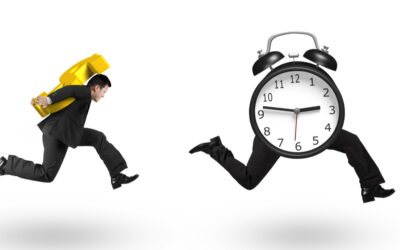If you’re like many property investors in 2025, you might be wondering: How can I create reliable income and growth without overextending myself? You’re not alone — we hear this from clients every week. One proven answer is the granny flat strategy. Adding a granny...
Capital Gains Tax (CGT) and Options to Buy or Selling Properties – Tips and Traps

⚠️ Important Timing Considerations – Especially Around Financial Year-End
Scenario Overview
- Option Granted: 1 May 2024
- Option Fee: $50,000 (non-refundable) to purchase a commercial property for $2,000,000
- Option Exercised: 10 August 2024
- Contract Formed (on exercise): 10 August 2024
- Settlement Date: 15 October 2024
- Seller Purchased Property: 1 January 2015 for $1,000,000
- Financial Years:
- 2023–24 ends 30 June 2024
- 2024–25 runs 1 July 2024 – 30 June 2025
🧑💼 BUYER (Grantee of Option)

✅ CGT Acquisition Date
- The asset is acquired on 10 August 2024, the date the option is exercised and the contract is formed.
- This date is critical for:
- Starting the 12-month holding period to qualify for the 50% CGT discount.
- Determining the cost base timing.
💰 Cost Base for the Buyer
- Purchase price: $2,000,000
- Option fee: $50,000
- Other costs (legal, stamp duty, etc.): $100,000
- Total cost base = $2,150,000
🗓️ The 50% CGT discount will only apply if the asset is sold on or after 10 August 2025
✅ CGT Acquisition Date
- The asset is acquired on 10 August 2024, the date the option is exercised and the contract is formed.
- This date is critical for:
- Starting the 12-month holding period to qualify for the 50% CGT discount.
- Determining the cost base timing.
💰 Cost Base for the Buyer
- Purchase price: $2,000,000
- Option fee: $50,000
- Other costs (legal, stamp duty, etc.): $100,000
- Total cost base = $2,150,000
🗓️ The 50% CGT discount will only apply if the asset is sold on or after 10 August 2025.
🧑💼 SELLER (Grantor of Option)

Event 1: Option Granted – CGT Event D2
- Occurs: 1 May 2024 (2023–24 income year)
- Option fee ($50,000) is assessable as a capital gain in 2023–24.
- The cost base of the option is typically zero unless specific expenses are incurred in granting it.
Capital Gain (2023–24):
- Proceeds: $50,000
- Cost base: $0
- Capital Gain: $50,000
- No 50% discount applies (the asset is not held; D2 is a separate CGT event).
Event 2: Sale of Property – CGT Event A1
- Occurs: 10 August 2024, the date the contract is formed (even though settlement is later).
- The CGT event A1 is triggered in the 2024–25 income year.
- Proceeds: $2,000,000
- Cost base: $1,000,000
- Holding period: >12 months → 50% CGT discount applies
🧮 Capital Gain (2024–25):
- Gross capital gain: $1,000,000
- Discounted capital gain: $500,000
Note: The option fee is not added to proceeds again, as it’s already taxed separately under Event D2.
📘 CGT Summary by Financial Year
| Party | CGT Event | Date | FY Assessed | Proceeds | Gain | Discount |
|---|---|---|---|---|---|---|
| Seller | Option Granted (D2) | 1 May 2024 | 2023–24 | $50,000 | $50,000 | ❌ No |
| Seller | Property Sale (A1) | 10 Aug 2024 | 2024–25 | $2,000,000 | $1M → $500k | ✅ Yes |
| Buyer | Acquisition Date | 10 Aug 2024 | 2024–25 | $2,150,000 (incl. option fee) | N/A (cost base only) | N/A |
| Buyer | CGT Discount Eligibility | On resale after 10 Aug 2025 | Future sale year | N/A | Depends on resale timing | ✅ if held 12+ months |
⚠️ Key Lessons
- The buyer’s acquisition date is the contract date from option exercise, not when the option was granted.
- The seller pays CGT in two different income years:
- Option fee in 2023–24 (CGT Event D2).
- Sale of property in 2024–25 (CGT Event A1).
- The option fee is taxed separately and not included in the sale proceeds.
- The 50% CGT discount depends on holding period from acquisition/contract date—not from the option date.
🏠 vs 🏢 CGT Treatment of Options: Residential vs Commercial Property Sales

🔷 1. CGT Treatment of Options – Generally the Same in Law
The basic CGT rules around options—i.e., CGT Event D2 for granting an option, and CGT Event A1 for selling the underlying asset once an option is exercised—apply consistently across all asset types, including:
- Residential property
- Commercial property
- Shares or other CGT assets
So, in terms of legal treatment, there is no distinction in how options are taxed solely because the underlying asset is residential or commercial.
🔷 2. Practical Differences – Substance Over Form Issues
However, there are significant practical and compliance differences, especially with residential property, where capital gains tax (CGT) exemptions or concessions may apply.
- Main Residence Exemption (MRE): Whether someone qualifies for a full or partial CGT exemption (e.g., under the six-year rule) depends on the date of contract, which could be manipulated using option structures.
- Foreign Residents and MRE: As of 1 July 2020, foreign residents lose access to the MRE unless certain life events apply. The ATO will assess residency status as of the contract date (which may follow an option period).
Thus, in residential cases, timing matters significantly more for whether an exemption applies, and this invites greater scrutiny.
⚠️ ATO Concerns – $1 Options to Manipulate CGT Timing
Yes, the ATO is very aware of potential abuse where options with token consideration (e.g., $1) are used to delay contract formation and shift CGT events into a later income year.
🎯 Key ATO Concerns:
- Deliberate timing manipulation: A seller may grant an option on 30 June for $1, allowing the buyer to exercise on 1 July, artificially deferring the CGT event to the following income year.
- Lack of commerciality: If the option fee is nominal or not arm’s length, the ATO may argue that the transaction lacks commercial substance.
- Anti-avoidance provisions: The ATO may invoke Part IVA of the ITAA 1936 (the general anti-avoidance rule) if the dominant purpose of the arrangement is to obtain a tax benefit by deferring capital gains tax (CGT).
🧾 ATO Guidance:
- TR 97/3 and TD 2001/27 make it clear that the CGT event occurs when a contract is entered into, not when an option is granted.
- However, if the option is not on commercial terms, or the parties are not dealing at arm’s length, the ATO may re-characterise the arrangement.
✅ Best Practice Tips
- Use commercial option terms: The option fee should reflect market value (e.g., 1–5% of purchase price), especially in related-party transactions.
- Avoid nominal options near 30 June: These raise immediate red flags with the ATO.
- Document genuine commercial reasons for the use of an option (e.g., buyer needs time for DA approval, finance, or regulatory approvals).
- Apply Part IVA lens: Always assess whether the arrangement, viewed holistically, has a dominant tax avoidance purpose.
- Watch for developer timing tactics: For instance, rolling options across tax years to delay capital gains tax (CGT) on rezoned land can attract scrutiny.
🧑⚖️ Example of Risky Structure
On 30 June 2025, John grants his family trust an option to buy his investment property for $2 million with a $1 option fee, exercisable on or after 1 July 2025.
- ATO likely view: This is an artificial timing mechanism with no commercial purpose other than to defer CGT into 2025–26.
- Risk: The ATO may disregard the option and treat the CGT event as having occurred on 30 June 2025 under Part IVA or look-through principles.
👇 Bottom Line
- CGT rules for options apply equally to all property types; however, residential properties, especially those with MRE implications, receive more ATO attention.
- Token or $1 options used to push CGT into a future year can trigger anti-avoidance scrutiny, especially if not at arm’s length or without genuine commercial reasons.
- Always seek professional advice before using options near year-end to ensure compliance with both technical and anti-avoidance provisions.
✅ Best Practice: How to Use Options Safely
If you’re considering using an option as part of your property transaction:
✔️ Ensure the option is commercially justifiable
✔️ Avoid nominal option fees (e.g., $1) near 30 June
✔️ Document the commercial reasons for using the option (e.g., time for finance or planning approval)
✔️ Be especially cautious with related-party transactions (e.g., family trusts or companies)
📞 Need Help?

If you’re planning to use an option agreement—particularly near the end of the financial year—don’t hesitate to get in touch with us before signing. We’ll help ensure the arrangement is compliant, commercially sound, and tax-efficient.
Granny Flat Strategy: Positive Cash Flow and Long-Term Growth
If you’re like many property investors in 2025, you might be wondering: How can I create reliable income and growth without overextending myself? You’re not alone — we hear this from clients every week. One proven answer is the granny flat strategy. Adding a granny...
New Residential Seller Disclosure Requirement in Qld from 1st August 2025
New Residential Seller Disclosure Requirement in Qld from 1st August 2025 What Property Sellers and Their Advisors Must Know Introduction Buying or selling a home in Queensland is about to undergo significant changes. From 1 August 2025, sellers will face new legal...
SMSF setup: smart timing for FY2025
Considering a SMSF setup before 30 June 2025. Pause.If there are no contributions or assets in the fund, you could be triggering thousands in avoidable compliance costs, all without gaining any strategic benefit. Why timing matters for SMSF setup Setting up an SMSF...
First Home Owner Grant and Stamp Duty Concessions for a NZ Citizen in VIC, QLD, and NSW
Main Points Considered A New Zealand Citizen living in Australia, do they qualify for the First Home Owners Grant (FHOG) Also, can they qualify for the First Home Owners Stamp Duty Concessions What if they rent out the spare bedroom to help pay the mortgage? Scenario...
Australian Homeowner Moving Overseas and Selling Their Principal Place of Residence (PPR) – Avoiding a $295,200 CGT Bill
Principal Place of Residence Exemption Loss if Sold While Overseas Summary of how the Principal Place of Residence (PPR) Exemption is impacted by moving overseas. When Australian homeowners move overseas and become non-residents for tax purposes, selling their...
Investment Property Capital Gains Tax (CGT) Calculation with PPR Transition
Having an investment property prior or posted to it being a principal place of residence has tricky CGT Calculations. Capital Gains Tax (CGT) is an essential consideration for property owners when selling a property used for different purposes over time. This blog...
Understanding Land Tax in Australia
Picture of a vacant block of land to illustrate it may be subject to land tax What is Land Tax? Land tax is a state and territory-imposed tax on the unimproved value of taxable land owned by individuals, companies, and trusts. It is calculated annually based on a...
Temporary Resident Purchasing a Principal Place of Residence in Australia. What are the rules, regulations, and fees you need to understand?
Temporary Resident in Australia Suppose you are a temporary resident in Australia and want to purchase a Principal Place of Residence (PPR). In that case, there are restrictions and requirements you must follow, mainly governed by the Foreign Investment Review Board...
Tiny homes have excellent rental yields, income streaming and tax minimisation strategies. How do they compare to a Granny Flat?
What are the tax and investment considerations for a Granny Flat above versus a Tiny Home below? Income Tax Return Reporting - Income Streaming Tiny Homes Tiny home ownership does not have to follow the ownership interest of the underlying property ownership. For...
Easier for Victoricans to build Granny Flats from December 2023.
Secondary Dwelling From December 2023 the Victorian Government has passed planning changes to make it easier to build Granny Flats - or "small secondary dwellings", on existing homes. The Victorian Premier Jacinta Allan revealed that planning permits will no longer be...



